Free Lead Tracker Template + Simple Lead Tracking Software
A lead tracker is a simple tool for organizing and tracking leads.
Depending on the size of your business, you can either use a spreadsheet or a dedicated lead tracking software.
1) a free lead tracker template in Google Sheets/Excel,
2) simple lead tracking software with automatic lead prioritization.
We’ll also go deeper into the benefits of lead tracking and list a few other tools you can use for this job.
Simple Lead Tracking Software
While spreadsheets are great, they are not as interactive as a simple CRM tool.
The good news is a CRM for small businesses doesn’t have to cost a lot.
For example, a simple CRM software for lead management can be very handy, especially when your lead database outgrows a spreadsheet.
However, if your business is still very small, you might not need a CRM software yet.
That’s why a spreadsheet with an Action Stream can be a great tool for tracking leads, while your business is still in its early days.
Scroll below to learn more and download the free lead tracker.
Free Lead Tracker in Google Sheets and Excel
Use this free lead tracker in Google Sheets to organize leads and prospects by follow-up dates. You can also download this file in Excel.
It’s a simple and dynamic list of leads with only one tab to fill out.
Every lead in this spreadsheet template has a follow-up reminder and is automatically sorted by urgency:
- Red for overdue touchpoints.
- Orange for today’s follow-ups.
- Grey for all future interactions.
Click on the button below to make a copy of the lead tracking template directly to your Google Drive.
Here are a few reasons why to download and use this lead tracker:
- 100% free and non-gated.
- Simple and color-coded prioritization.
- Automatic follow-up reminders to your Gmail account.
- Only one tab to manage and fill out.
- Built in Google Sheets (cloud access).
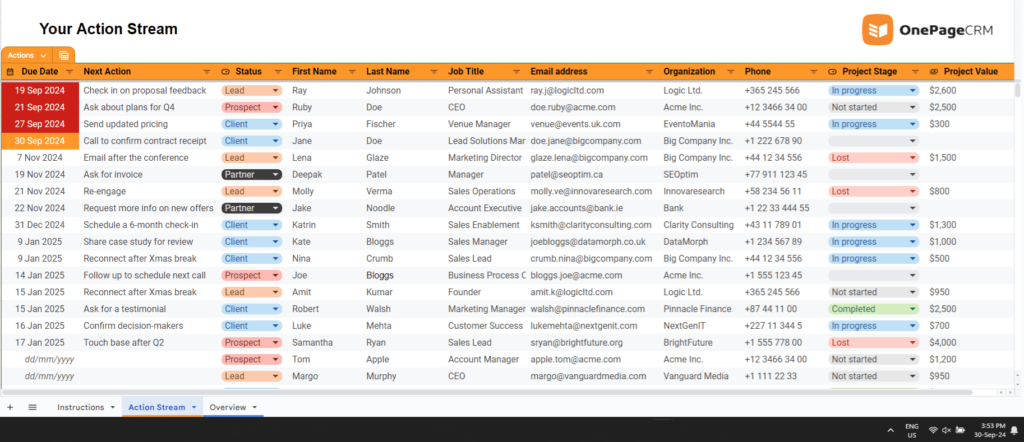
How this free lead tracker works
Once you download the Lead Tracker, get familiar with its tabs and columns.
If needed, make two copies of this Google Sheets document:
- Use the first copy for testing things out. For example, adding or removing columns, sorting and deleting contacts.
- Watch the video tutorial and follow the instructions from this post (listed below).
- Once you’re comfortable with the lead tracker, delete the first copy (your experiment).
- Use the second copy for your actual data.
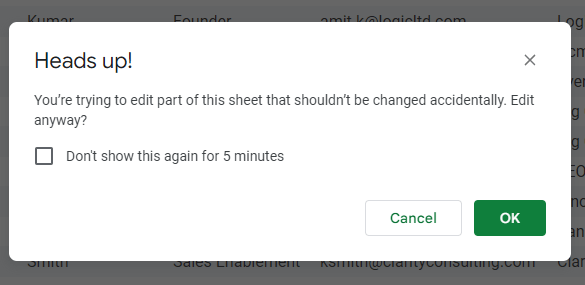
Here are more detailed instructions on how this free lead tracking spreadsheet works, what data you can update, and how this tracker is set up:
-
1. Update follow-ups
In the Lead Tracker, follow-up reminders are called Next Actions.
They have conditional formatting. For example, if you miss a follow-up date, the cell will turn red, and all follow-ups scheduled for today are marked orange.
You can update the follow-ups as needed:
• Remove or add new dates.
• Update the text for the associated Next Actions.
• Filter the date column by date or Sort A to Z to have the most urgent follow-ups at the top.
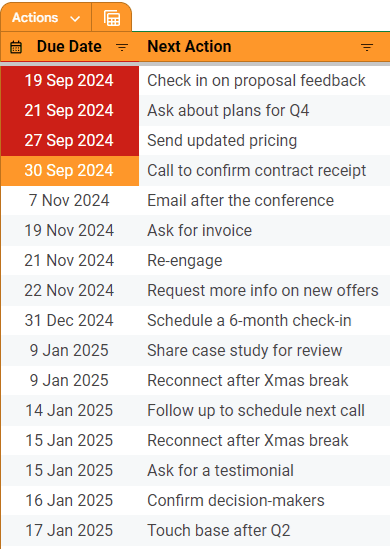
In this Lead Tracker template, all dates have formulas. For example:
=TODAY()
=TODAY() - 10
=TODAY() + 5
Feel free to remove the formulas and input the dates in your usual format. You can double-click on a date cell to open the calendar date picker. -
2. Segment leads by Status
This free lead tracking tool allows for simple segmentation.
All contacts in the spreadsheet have color-coded Statuses: Leads, Prospects, Clients, and Partners.
You can customize the statuses by choosing different labels and colors.
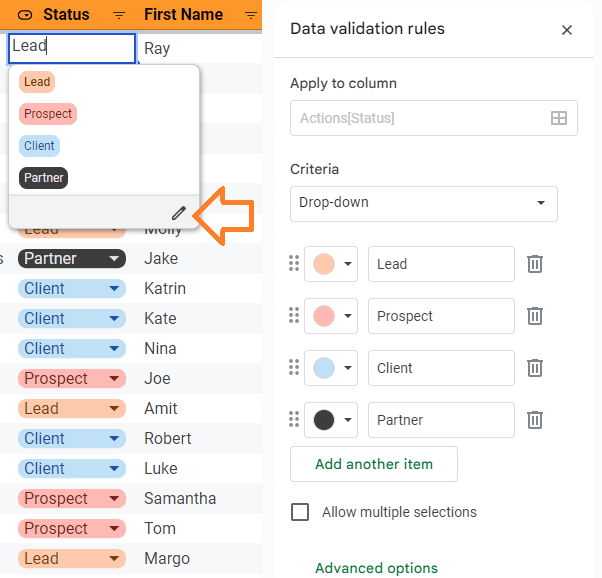
Besides sorting and organizing your leads by follow-up reminders and Statuses, you can also organize them by the sales deal (or project) stages.
This can be useful when you need to view only leads at the initial or negotiation stage and want to exclude contacts with the Completed/Closed or Lost stage.
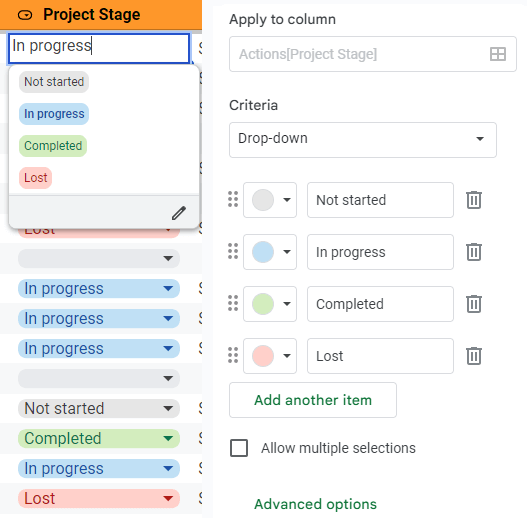
Similarly, you can update the Project Value (or Deal Amount).
Right now, the USD is set as a custom currency in this template, but you can easily change it directly in Google Sheets (or Excel).
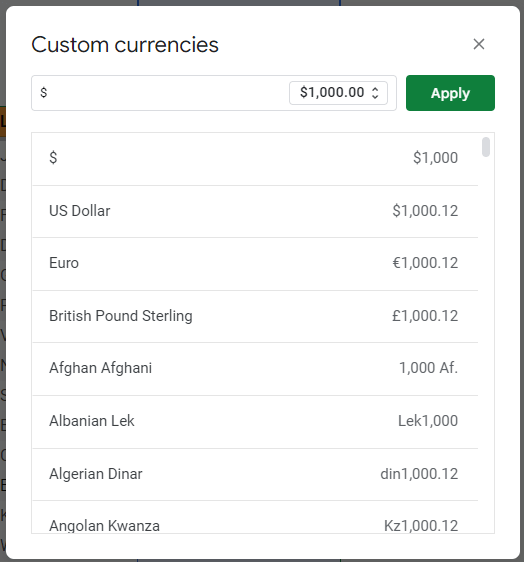
Note. This lead tracking template has both: contacts that are labeled as leads and those labeled. You can use this spreadsheet to track both, your leads and your customers. -
3. Change views
The Lead Tracker has four views:
• The Default View shows you all of your contacts in the spreadsheet.
• The Contacts with Actions view shows only leads with follow-ups.
• The Contacts without Actions view shows leads with no follow-up reminders.
• The Focus Mode view lets you focus on the most urgent touchpoints for today.
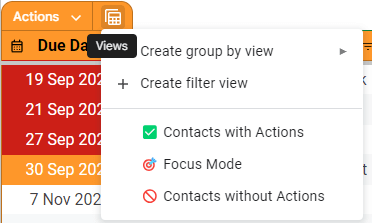
-
4. Get email notifications
This is possible only in Google Sheets, not Excel.
Install a free add-on to receive email notifications each time a follow-up is due.
If you don’t need to open the Lead Tracker every day, this add-on will remind you when it’s time to reach out to a lead or a customer. So you don’t need to use to-do apps or task managers.
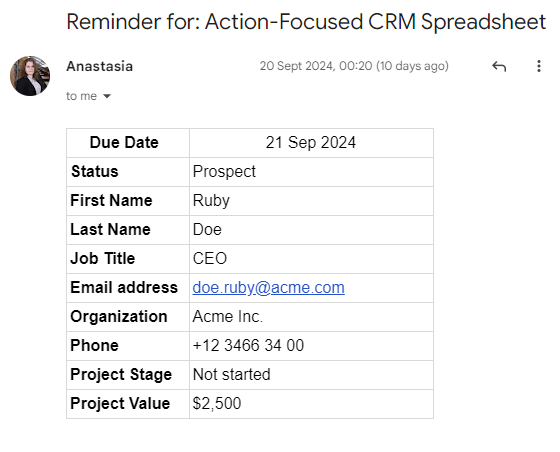
Example of an email reminder received in Gmail -
5. View reports
The Lead Tracker also has a simple dashboard.
You don’t need to fill it out. The dashboard uses spreadsheet formulas and automatically displays your data in graphs and charts.
If you are looking for a free lead tracking software with a simple dashboard, this template can be very handy.
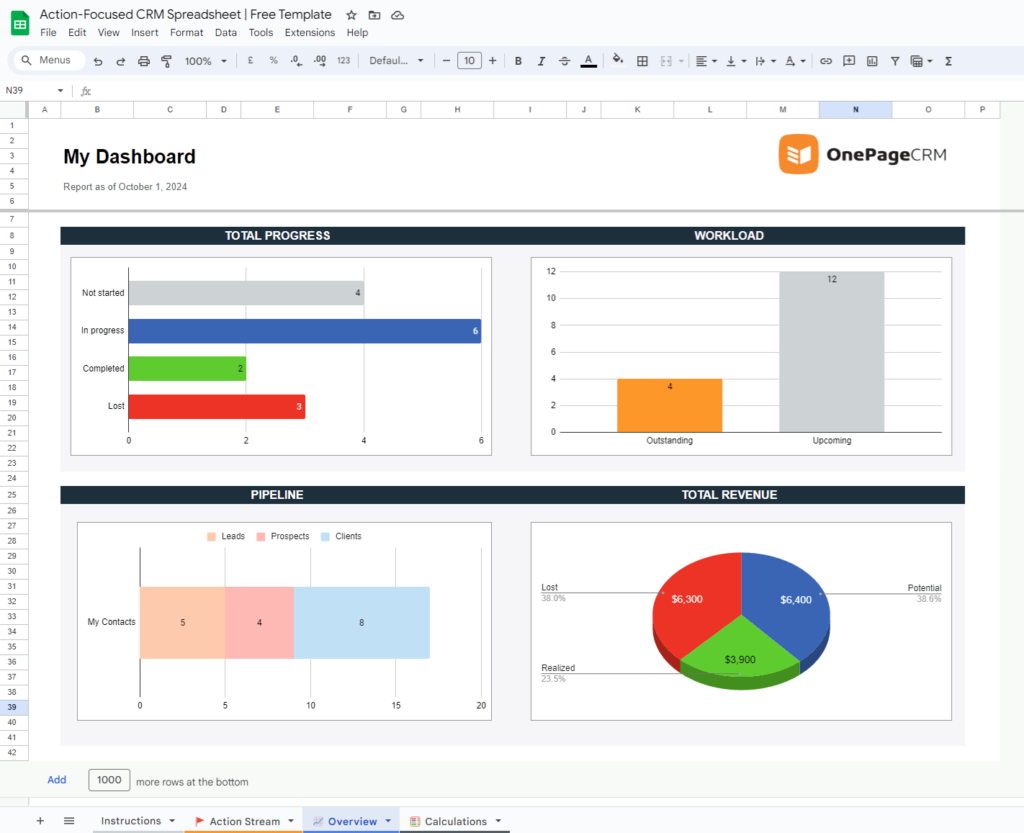
Use these few simple steps to set up and configure the free spreadsheet for your needs.
Best practices for using this free lead tracker
Here are a few things to keep in mind when using this lead tracking template:
- Use the Lead Tracker in Google Sheets instead of Excel to keep the data easily accessible on different devices.
- Make sure to watch the video tutorial or read the instructions to better understand how this template works.
- Add an apostrophe (‘) before the plus (+) in phone numbers to avoid errors in Google Sheets.
- Keep data entry as low as possible. Remove any columns that are not useful for your business.
- Change Projects to Deals (and vice versa) depending on which terminology you use. Deals are more common in sales. Projects are used by consultants and freelancers.
- Always add actions to your leads to make the most out of this Lead Tracker.
- Click on the Sort button regularly to move non-urgent leads down the Action Stream.
You can also track leads without using a lead tracker in Google Sheets.
What is lead tracking?
When you keep track of leads, you know when it’s time to reach out to them and take the conversation further down the sales cycle.
To achieve this, you can either use a dedicated lead tracking software or some simple lead tracking tools.
Lead tracking benefits
Lead tracking is extremely common in marketing.
Yet, it’s equally important to track leads in sales.
A proper lead tracking system can help you boost sales revenue and optimize sales processes. But those are consequences rather than direct benefits.
So let’s look at the top five reasons why lead tracking is so important.
-
1. Organize leads in one system
When leads are scattered across emails, business cards, and notes, it’s easy to lose track of potential deals.
By organizing leads in one system, you’ll have a single source of truth, whether that’s a simple spreadsheet or a dedicated CRM.
No more searching through emails or wondering where you saved that prospect’s phone number. -
2. Prioritize leads in a simple way
Not all leads are equally important: some are ready to buy right away, while others need more nurturing.
A lead tracker helps you prioritize prospects based on their readiness to purchase, budget, or other qualifying factors that matter to your business.
With a proper prioritization system, you can focus on high-potential leads first. In other words, you’ll be able to spend more time on activities that are most likely to generate revenue. -
3. Track progress with every lead
Sales rarely happen after just one conversation because closed deals require multiple touchpoints.
With lead tracking, you can document every interaction and see how each relationship develops over time. Proper tracking makes it easier to pick up conversations exactly where you left off.
You’ll also spot patterns in your sales process. For example, how many touchpoints it typically takes to close a deal. This, in turn, will help with forecasting. -
4. Keep on top of all follow-ups
Follow-ups are where sales are won or lost. Each time you forget to follow up with a prospect or lose track of when you need to reach out next, you risk losing new revenue.
A good lead tracking system reminds you when it’s time to contact each prospect or check in after sending a proposal.
Your leads can convert into paying customers only if you actively invest in building and nurturing relationships with them.
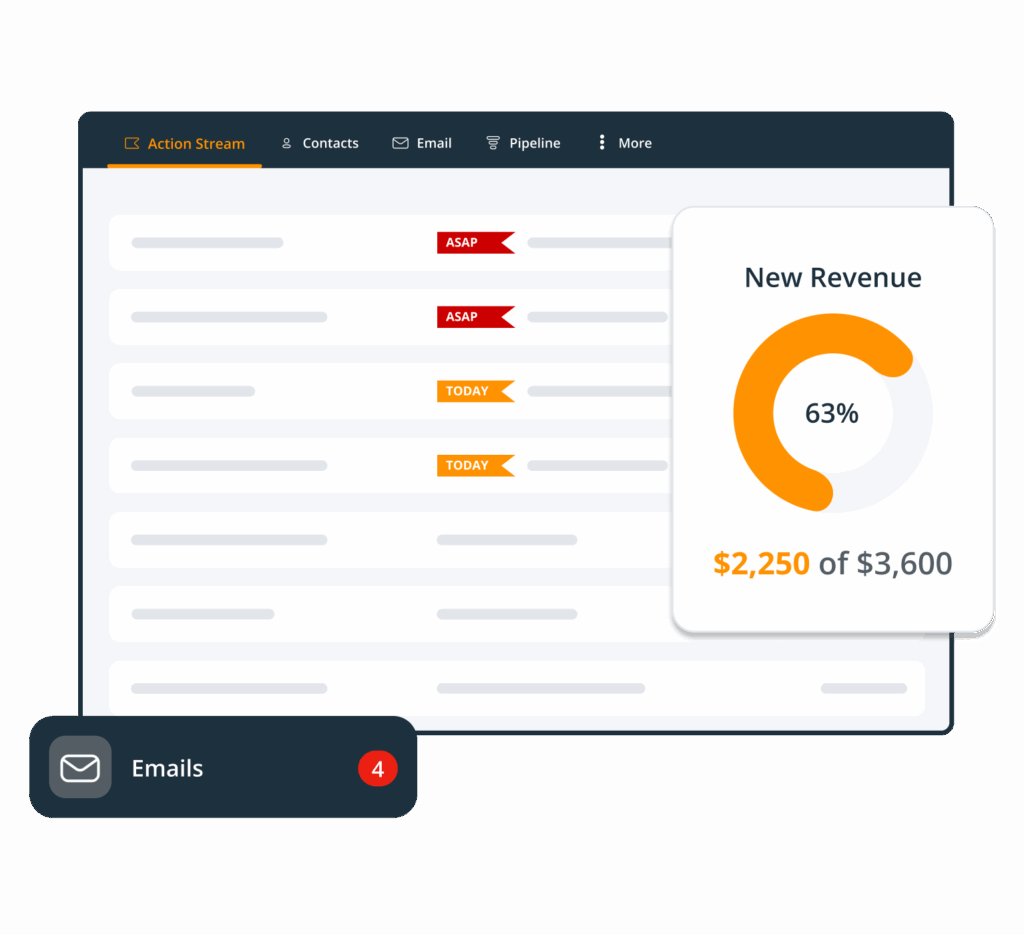
OnePageCRM’s Action Stream -
5. Simplify your sales process
With proper lead tracking, your entire sales process becomes more straightforward. Most importantly, it’ll have a pattern of repeatable sales activities.
A lead tracker will help you develop clear steps for moving prospects through your pipeline. Besides, when you grow your business and hire more people, this consistency will make it easier for new team members to understand what to do and when.
A simplified sales process also helps identify bottlenecks, which are the points where leads tend to get stuck. When you know about the issues in your sales process, you can address them and improve conversion rates.
How to keep track of leads?
If you want to find a way to track leads, there are several things you need to do.
First of all, it’s important to understand what kind of leads you want to track and what information you need. Are they marketing qualified or sales qualified?
If you’re more interested in marketing leads and automated mass lead generation, then a dedicated marketing automation software will most likely be your top choice.
However, if you’re looking for how to track sales leads for a small business or a small sales team, a simple lead tracker without extra bells and whistles can be just the right tool for you.
Here are a few hands-on tips on how to keep track of leads, whether you’re using a free lead tracker or a proper lead tracking software:
-
1. Use a lead tracking tool
When you capture a new lead, you need to have a centralized system to store and organize all of them.
Contrary to popular belief, a lead tracking system doesn’t have to be a CRM or marketing automation software.
You can choose to keep your leads in a spreadsheet (Google Sheets or Excel), Trello, Notion, or even a task management tool.
Your choice will depend on your needs, the size of your database, and even the size of your team. -
2. Add basic contact info
Regardless of what lead tracking tool you choose, make sure it stores all the important information about your leads:
• First and last names
• Organizations
• Email addresses
• Phone numbers
This is not an extensive list.
Depending on your business type, your lead tracker might have more fields, such as job title, deal value, or anything else.
It’s also totally okay to have a smaller number of fields. If you need only the names and follow-up dates to get your job done, this is perfectly fine.
There’s no right or wrong answer when it comes to how to track leads. You decide on what strikes the balance between being easy to use and informative enough. -
3. Set follow-up reminders
To keep track of leads, you need to track your follow-ups and touchpoints. That’s the main goal of having a lead tracker.
Once you choose a tool for tracking leads and add all the necessary fields, assign follow-up reminders next to every lead on your list.
Follow-up reminders are an easy way to prioritize your leads and prospects. If someone has a bigger deal, it doesn’t always mean you need to reach out to them straight away.
When you organize your leads based on follow-ups, you’ll have a clearer idea of your workload and priorities for the day.
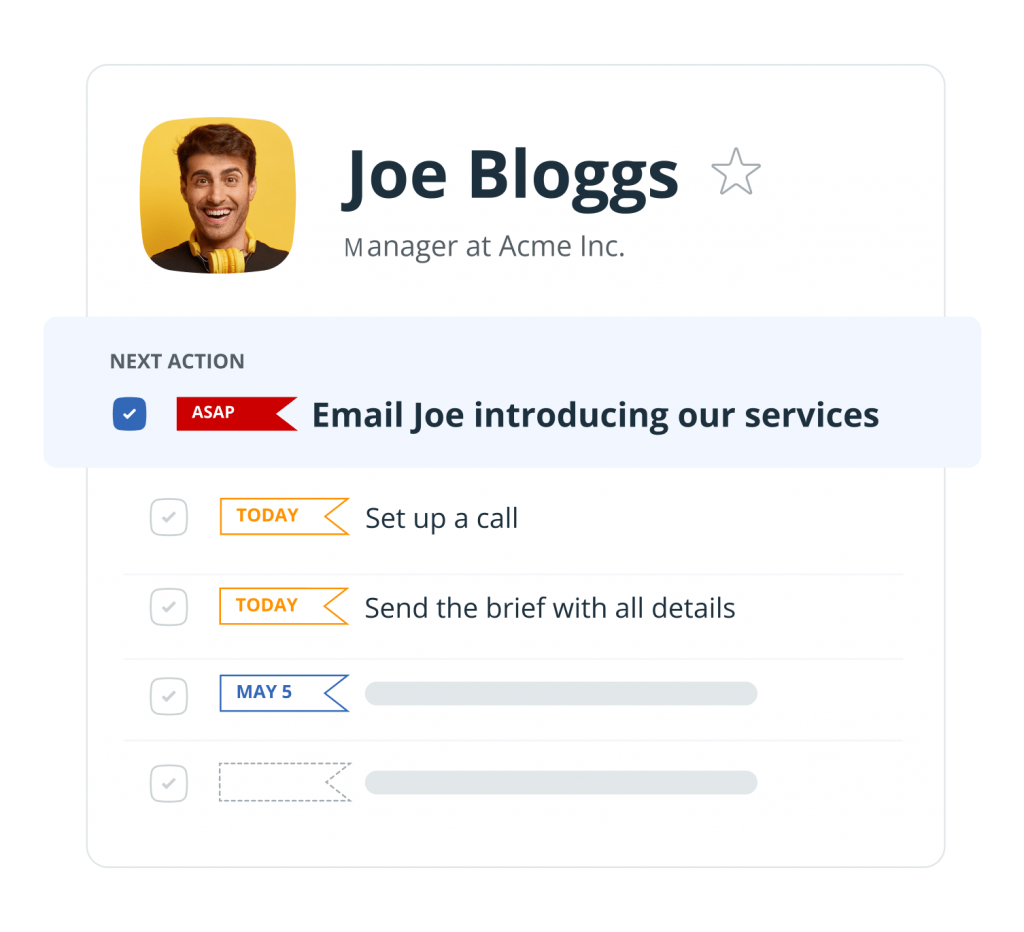
-
4. Turn lead tracking into a habit
A lead tracker will work only as long as you’re using it.
Once you find a system, stick to it.
If you have a small business, you might not need to reach out to leads every single day. So find a cadence that works for you and makes sense to you.
Then keep showing up on a consistent basis.
Top 5 lead tracking tools
When it comes to choosing the right lead tracking software, the choices vastly vary.
You can use something as simple as a free spreadsheet with just a couple of columns—or you can sign up for a dedicated marketing automation software that costs hundreds of dollars every month, like HubSpot.
Both choices, even though they are completely opposite, are okay. At the end of the day, your lead tracking tool should make sense to you and meet your current needs.
Some businesses need a comprehensive lead tracking and management tool, while others need a simple app to organize and store their prospects.
So here are the top 5 solutions you can use to track leads.
-
1. A lead tracker template in a spreadsheet
A spreadsheet in Google Sheets or Excel can be a great lead tracker for businesses just starting out or those with simpler needs.
Lead trackers in spreadsheets are super flexible and low-cost. You can customize columns, sort contacts, and even add simple automations.
Spreadsheets are also familiar to most people, which means minimal training for you and your team. Plus, when using Google Sheets, your data is accessible from anywhere and automatically backed up. -
2. A CRM to track leads
However, at some point, your business can outgrow spreadsheets.
In this case, a CRM (Customer Relationship Management) system is the natural next step.
It can be something as simple as OnePageCRM (used to track sales leads) or as comprehensive as HubSpot (used to track marketing leads).
CRM systems make lead tracking much more powerful. They offer features like automatic email logging, follow-up reminders, and drag-and-drop pipelines.
Besides, a CRM can grow together with your business. You can use it for basic lead tracking at first and then gradually introduce more features to meet your changing needs. -
3. A Notion template for tracking leads
Notion has become a popular all-in-one workspace tool. So this list would have been incomplete without Notion. It can work great for tracking leads, too.
On Notion, you can create a database of leads with custom properties, views, and relations to other databases (like products or team members). You can switch between table view, kanban boards, calendars, and more. You can also attach files, add notes, and integrate with other tools.
If you’re not a fan of building tools, check out a large library of Notion templates (more than 30,000 templates). You might be able to find something there that fits your needs.
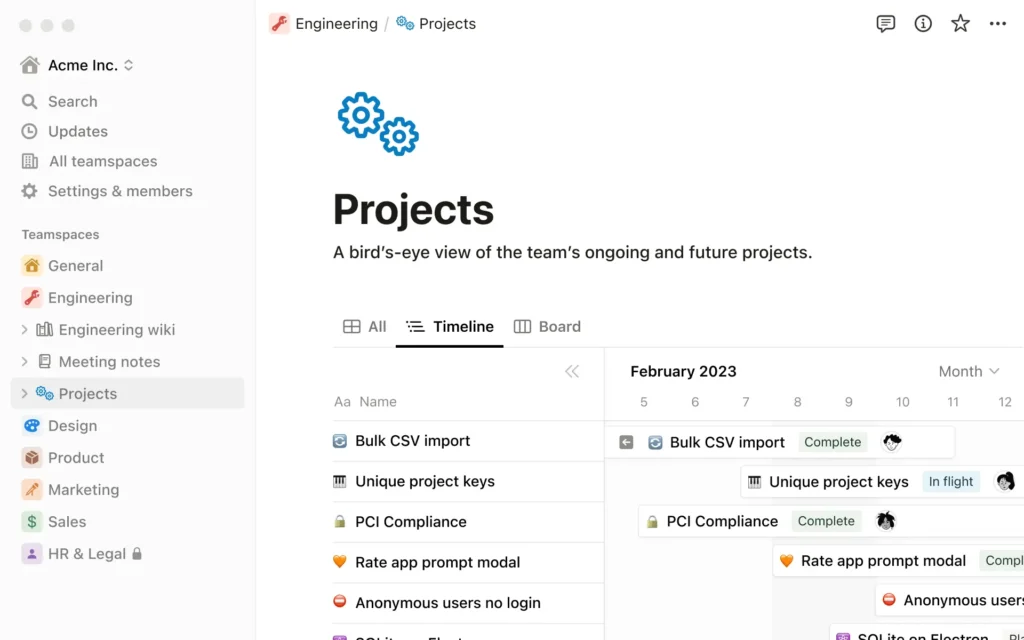
Source: Notion -
4. A lead tracker on a Trello Board
Trello is famous for its Kanban-style design, which can be very useful for lead tracking or a basic CRM alternative.
In this case, each lead becomes a Trello card that moves through lists representing your sales stages.
You might have lists for “New Leads,” “Contacted,” “Meeting Scheduled,” “Proposal Sent,” and “Closed.”
Trello’s design and simple interface make it easy to see where you stand with each lead. Plus, you can add checklists, due dates, attachments, and comments to each card to track more details. -
5. A lead tracker in a task manager
Sometimes, you might want to go even simpler.
In this case, using a task manager like Todoist or TickTick can be an effective way to track leads, especially for solo entrepreneurs who are just starting out and have just a handful of customers.
Create a project and add follow-ups as tasks with deadlines. Add notes, subtasks, and even tags to categorize your outreach.
This is not a proper lead tracking tool, but it can be a placeholder if you’re used to using task management systems and don’t want to switch to anything else at the moment. Your lead follow-ups will then appear alongside your other tasks.
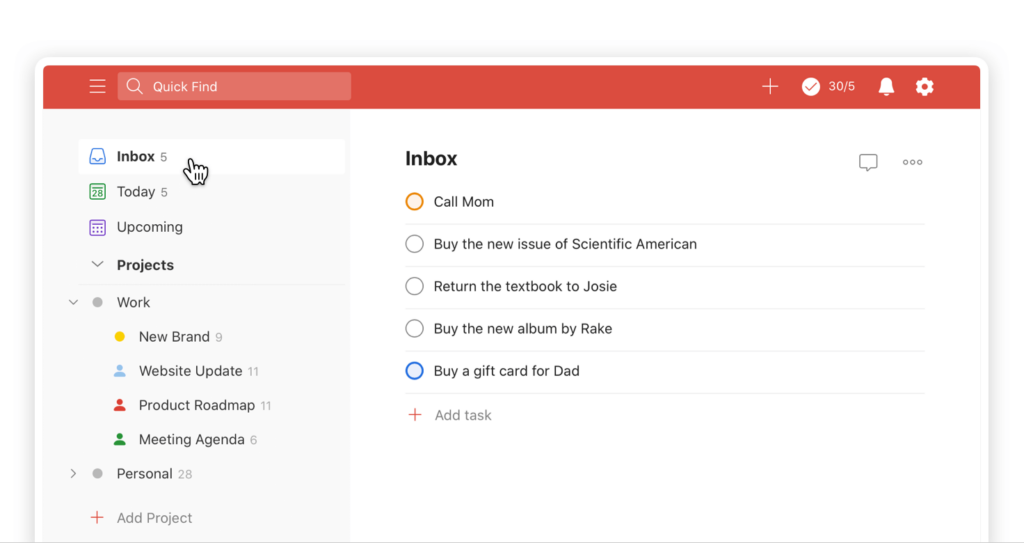
Source: Todoist
Final thoughts on lead tracking
As you can see, lead tracking doesn’t need to be complicated to be effective. The best software is the one that works for you and that you’ll use consistently.
Give our free Lead Tracker template a try or set up a free trial with OnePageCRM to see how easy it is to organize, prioritize, and follow up with leads once you have a good lead tracking system in place.

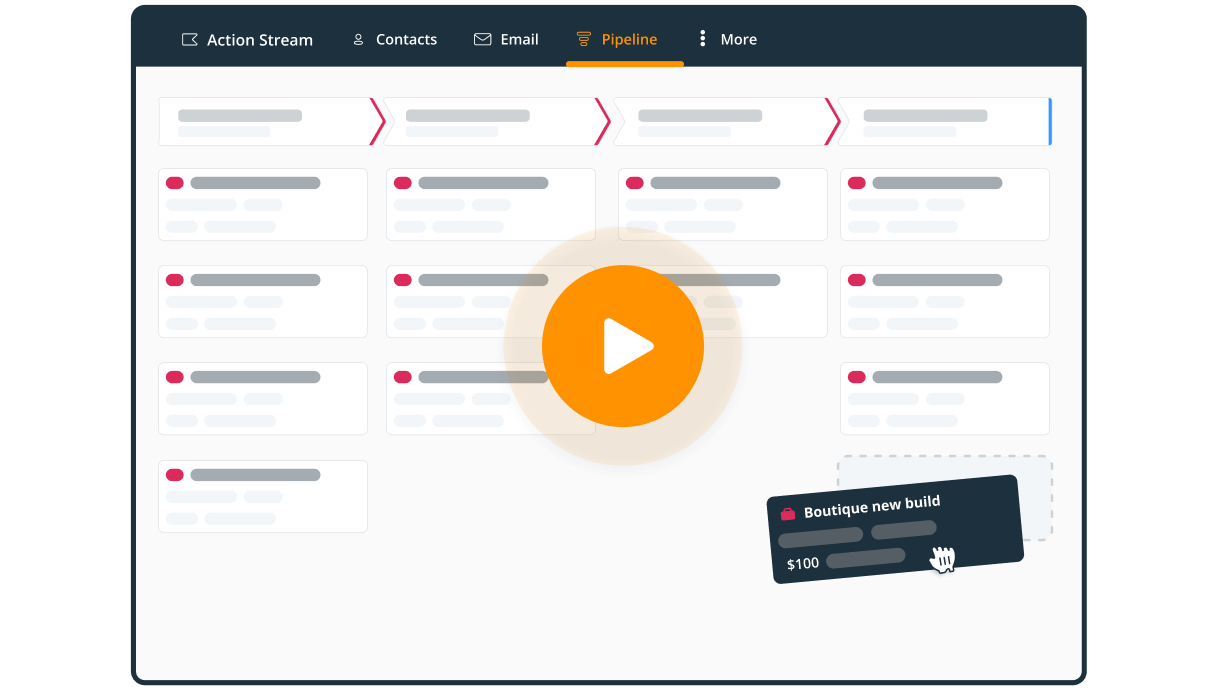




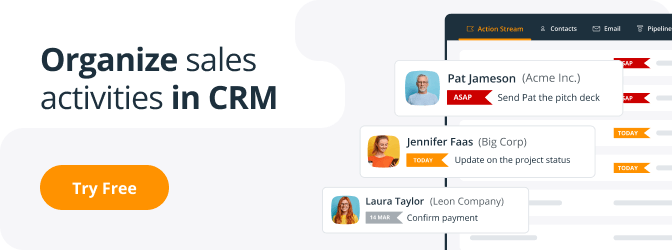
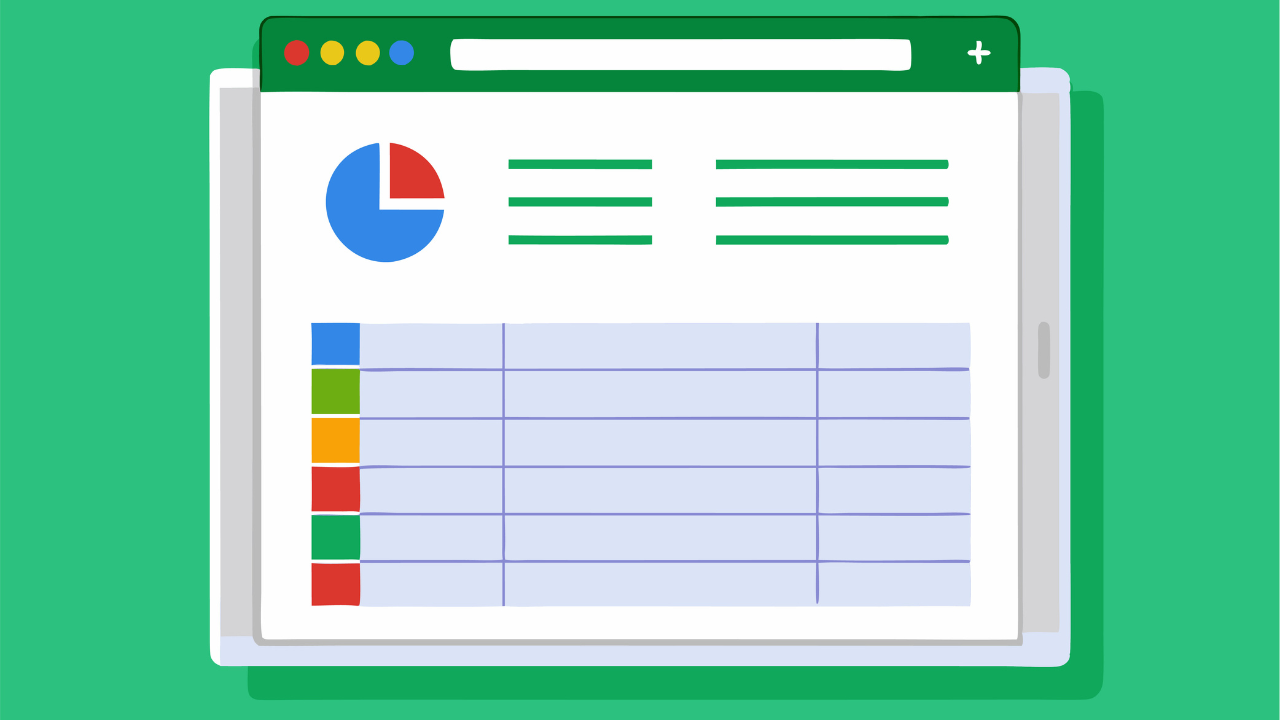





Is there a way to change the date format from dd/MM/YYY to MM/dd/YYYY without messing up the coding for the drop down calender?
Hi Tim,
Thanks for getting in touch!
Yes, it’s possible to change the date format in Google Sheets. You need to navigate to File > Settings and select United States from the dropdown menu.
You can find more information here: https://support.google.com/docs/answer/58515?hl=en
Kind regards,
Anastasia
for some reason I cannot get it to save my edits. I made a bunch of changes to the layout and now when I fill in the boxes with a new lead and close the document is doesn’t have the recent updates. How do I fix that?
Hi John,
Thank you for getting in touch!
This spreadsheet is hosted on Google Sheets, so you need to make sure that Google Sheets works correctly.
Here’s a bit more information on this issue and troubleshooting from Google: https://support.google.com/docs/answer/12111392?hl=en
Kind regards,
Anastasia